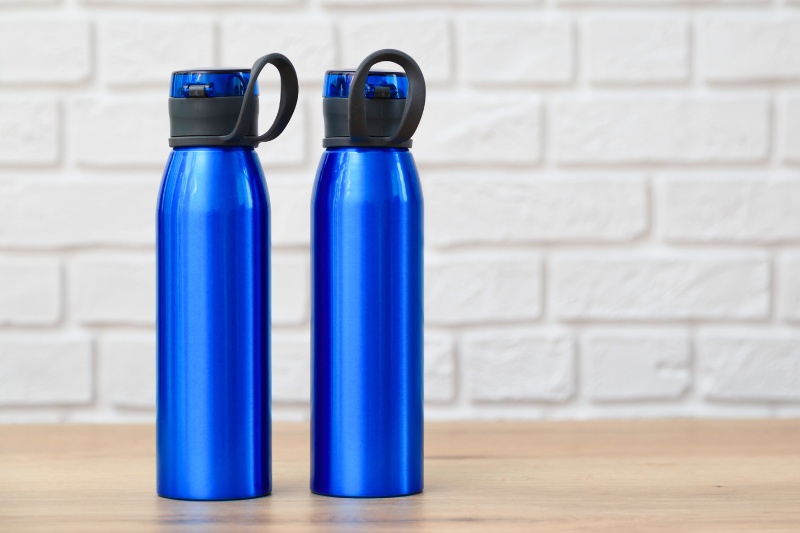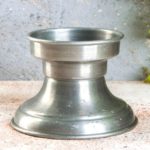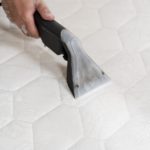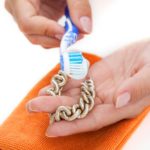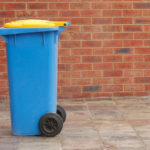With their sleek and portable designs, flasks are the perfect companion for those who appreciate a sip of their favourite beverage on the go, whether it’s coffee to kickstart your day, a refreshing drink on a hiking adventure, or a warming sip of whiskey around the campfire.
However, a flask requires care and maintenance to ensure it stays as dependable as the day you first filled it.
In this article, we’ll teach you how to clean a flask properly, providing you with the knowledge and techniques needed to keep your flask hygienic and odour-free.
From everyday maintenance to tackling stubborn stains and odours, we reveal it all here.
How Are You Supposed to Wash a Flask?
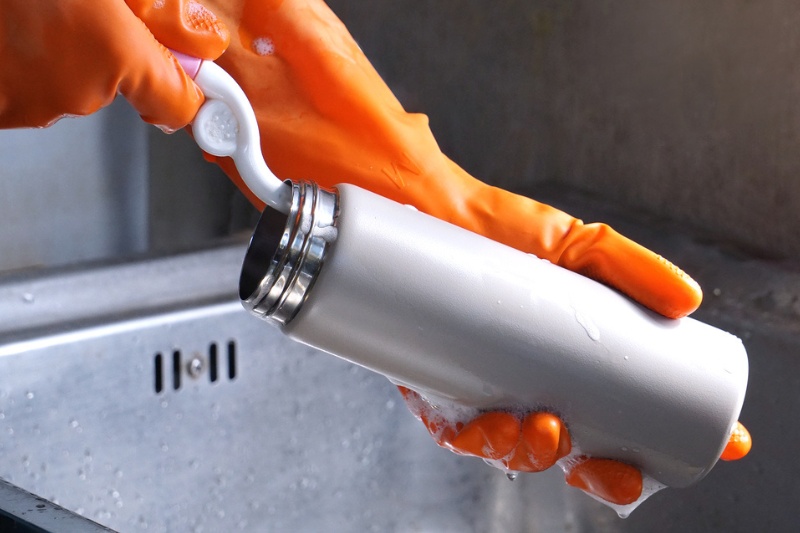
It’s generally a good idea to wash a flask after each use. Flasks are often used for storing and carrying liquids, such as water, coffee, tea, or other beverages.
Over time, residue from these liquids, as well as bacteria and mould, can build up inside the flask if it’s not properly cleaned.
Here are some steps you can follow to wash a flask after each use:
- Empty and rinse: Unscrew the lid of the flask and pour out any remaining liquid from the inside down your kitchen sink. Rinse the flask with hot water to help remove any residue and make the cleaning process easier.
- Wash with washing-up liquid: Add a small amount of mild washing-up liquid to the flask. Use a brush to scrub the interior of the flask thoroughly, paying extra attention to the cap and mouthpiece. Make sure to also clean the flask exterior if it is dirty.
- Rinse and air dry: Rinse the flask several times with hot water to remove any soap residue. After rinsing, let the flask air dry completely with the cap off. This helps prevent moisture buildup and the growth of mould or bacteria.
After cleaning your flask, we recommend storing it with the cap off when not in use. This allows for ventilation and prevents odours from developing inside the bottle.
What Can You Use to Wash a Flask?
The above cleaning method uses washing-up liquid to clean a flash. Dishwashing liquid is a suitable and readily available choice.
It can help break down residue and odours from beverages you’ve stored in the flask. Plus, it’s also an incredibly convenient option for cleaning—simply wash your flask in the sink with the rest of your dishes using your washing-up liquid of choice.
However, dish soap isn’t the only option! Below are several other tried-and-tested cleaning agents you can use to clean a flask:
1. Bicarbonate of soda

Bicarbonate of soda (also known as baking soda) is a natural abrasive that can help eliminate stains from your flask. It is also a natural deodoriser, making it a great option if you need to remove smells.
To use this method, follow these steps:
- Measure out approximately three tablespoons of bicarbonate of soda.
- Pour the bicarbonate of soda into the flask directly or using a funnel if the opening is too small.
- Fill the flask with warm water, leaving some space at the top to prevent overflow.
- Securely close the flask with its cap or lid to prevent spills.
- Gently shake or swirl the flask to mix the bicarbonate of soda and warm water.
- Allow the flask to sit with the bicarbonate of soda solution inside for at least 15 minutes.
- Scrub the flask’s interior, ensuring you pay attention to any areas with stains or residue.
- Empty the cleaning solution from the flask and rinse it thoroughly with hot water.
- Rinse several times to ensure no bicarbonate of soda residue is left behind.
- Leave the flask open and upside down to air dry completely before storing.
2. White vinegar
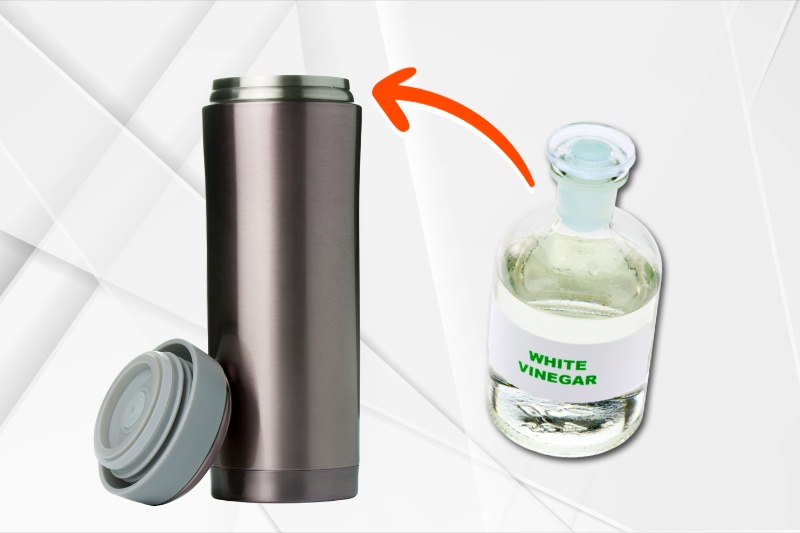
White vinegar is another natural cleaning agent and deodoriser that can help remove stains and smells from various items, including stainless steel flasks.
Here is a step-by-step method on how you can use vinegar to clean your flask:
- Dilute white vinegar with water in equal parts to create a cleaning solution.
- Pour the cleaning solution into your flask and screw the cap tightly shut.
- Gently shape the flask to ensure the vinegar solution reaches all surfaces.
- Allow the vinegar solution to sit inside the flask and soak for up to 30 minutes.
- Open the lid and scrub the interior of the flask using a brush or sponge.
- Rinse thoroughly after using vinegar to ensure no lingering taste or odour.
- Allow your flask to air dry completely before storing it with the cap off.
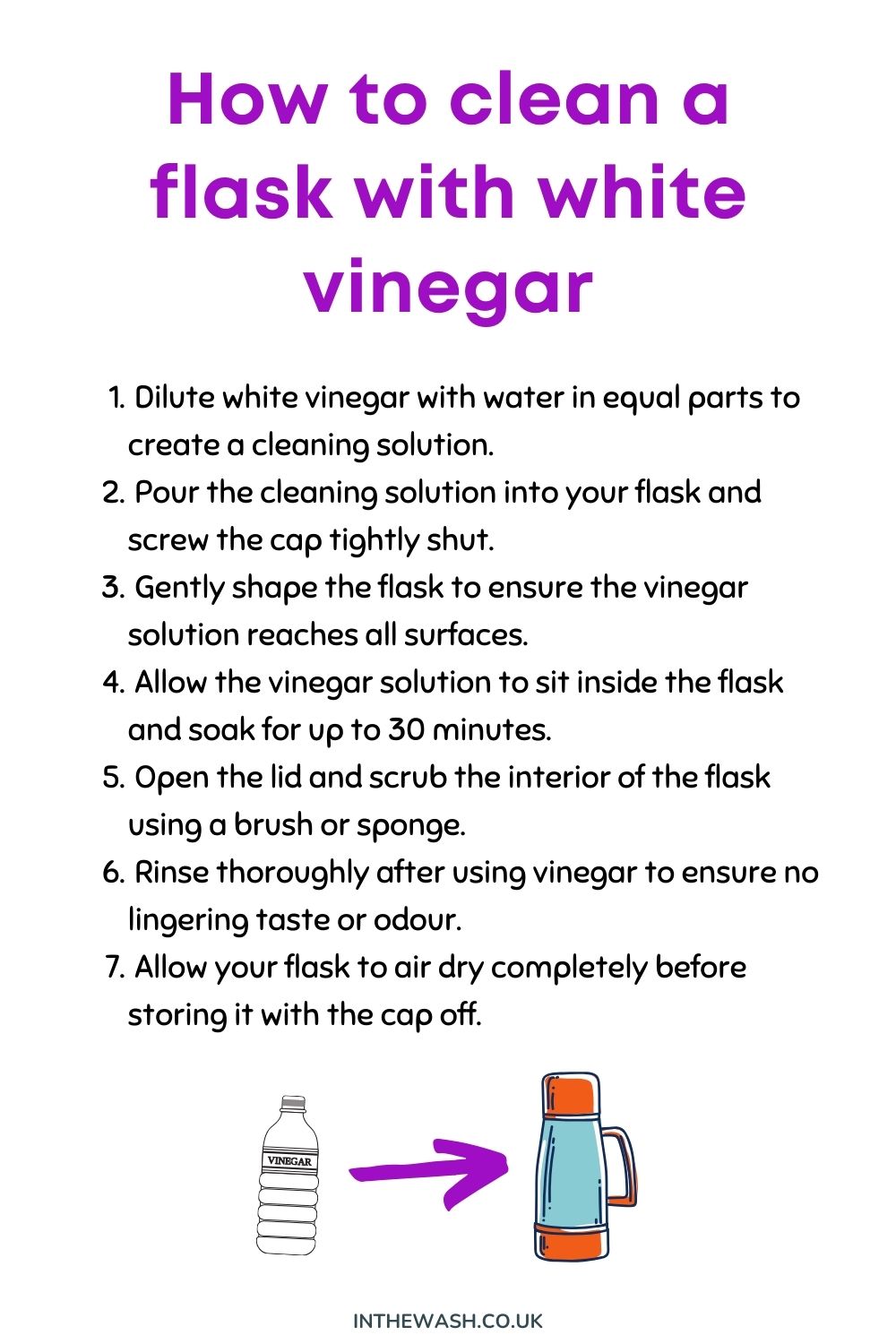
3. Bottle cleaning tablets
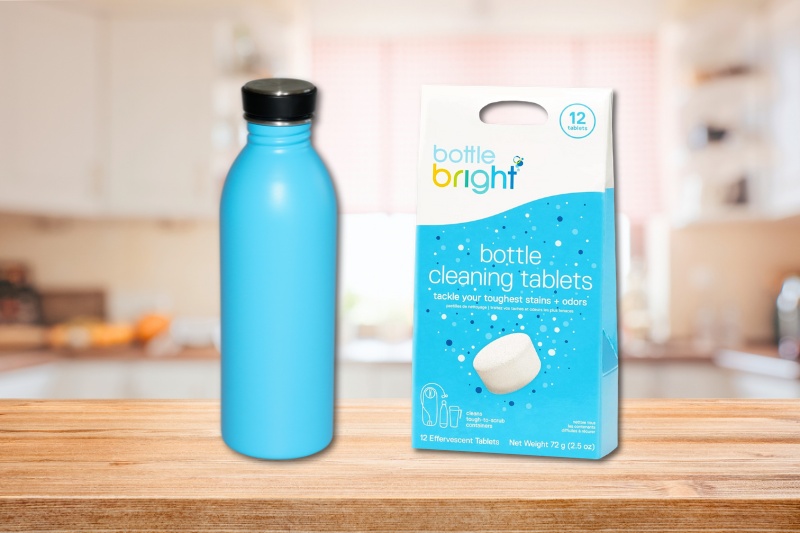
Some companies, like Bottle Bright, sell specialised effervescent cleaning tablets designed for water bottles and flasks.
These tablets work by using a combination of effervescent action, detergents, and disinfectants to clean and sanitise the interior of the bottle.
Here is how to use them:
- Fill your flask with warm water, leaving a little space at the top.
- Drop the bottle-cleaning tablet into the water—it should start fizz and dissolve.
- Swirl the flask gently to help mix the dissolved tablet with the water.
- Allow the solution to sit according to the instructions on the packet (usually up to 30 minutes).
- Rinse your flask with warm water several times to ensure no residue remains.
- Leave the flask to dry completely and then store with the cap off.
4. Denture tablets
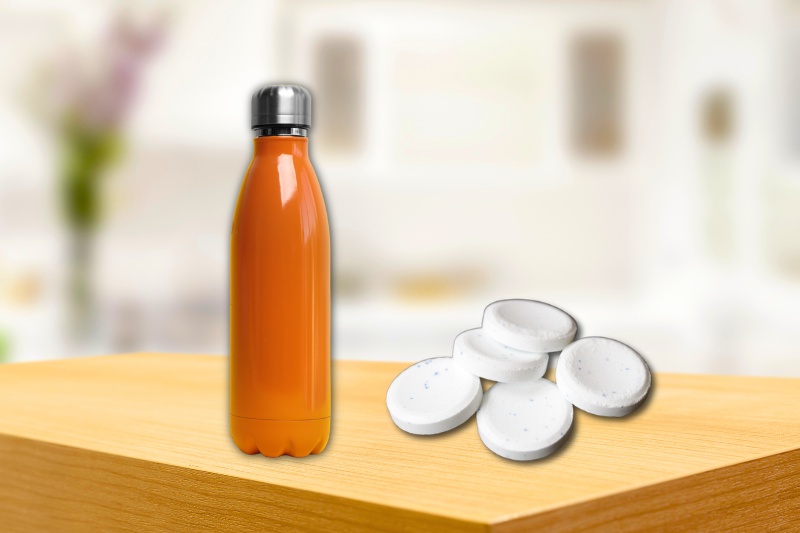
Rather than buying bottle cleaning tablets, you can repurpose denture cleaning tablets for the purpose of cleaning a flask.
These tablets are designed for cleaning dentures, but their stain and odour-busting properties also work on flasks and bottles:
- Fill your flask with warm water and drop in 1 or 2 denture tablets.
- Swirl the flask’s contents gently to ensure the solution gets into all the crevices.
- Leave the flask to sit and soak for 15 to 30 minutes, helping to cut through stains and smells.
- Pour the denture solution down the sink and rinse the flask with hot water.
- Position the flask upside down and allow it to air dry before storing away.
Can You Clean Flasks in the Dishwasher?

Whether or not you can wash a flask in the dishwasher depends on the flask. It’s best to consult the manufacturer’s instructions to see whether it is an appropriate cleaning option for your bottle.
If in doubt, we recommend that you err on the side of caution—handwashing is always a safer and more thorough cleaning option.
However, if you want to put your flask in the dishwasher, here are some guidelines to consider:
- Check the manufacturer’s instructions: The first step is to consult the manufacturer’s instructions or care guidelines that came with your flask. They will often specify whether the flask is dishwasher-safe or not. Always follow these, or you risk damaging your flask.
- Material matters: The material from which the flask is made is a crucial factor. Many stainless steel and glass flasks are designed to be dishwasher-safe, but other materials, such as plastic or certain coatings, may not withstand the high heat and agitation of a dishwasher.
- Put it on the top rack: If the flask is dishwasher-safe, it’s generally recommended to place it on the top rack of the dishwasher. This helps protect it from the intense heat and water pressure items placed on the bottom shelf may experience.
- Use a gentle cycle: If your dishwasher has multiple wash cycle options, choose a gentle or delicate cycle. You should also avoid using the high-temperature drying cycle if possible, as this can sometimes cause damage to the flask’s components or lead to discolouration.
- Inspect for damage: After washing your flask in the dishwasher, inspect it for any signs of damage, such as warping, discolouration, or loss of insulation properties. If you notice any issues, it’s best to discontinue dishwasher use and clean the bottle by hand in the future.
Tips for Cleaning a Stainless-Steel Flask
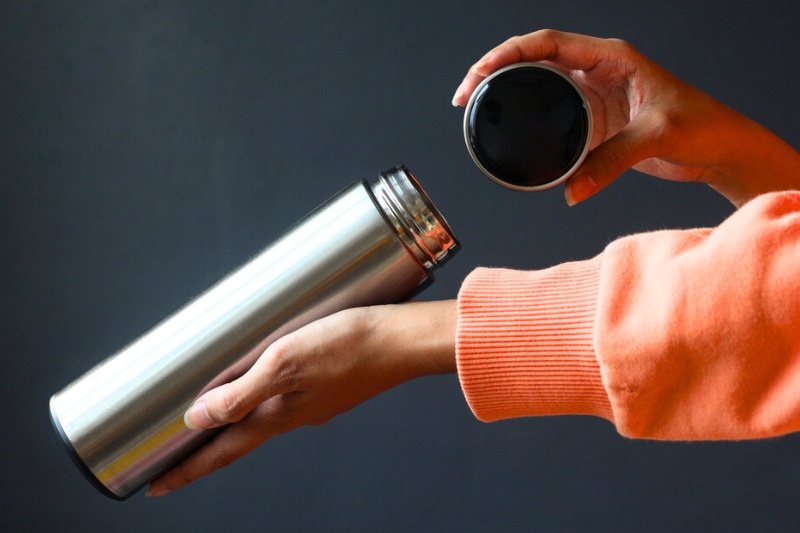
- Always rinse thoroughly: After using any cleaning agent, be sure to rinse your flask thoroughly with hot water after cleaning to remove any residue or taste from the cleaning solution. Multiple rinses are recommended to ensure the residue is eliminated.
- Remove components: Disassemble your flask as much as possible before attempting to wash it. E.g., remove the cap, gasket, straws, and any other detachable parts. These components may have specific care instructions and should be washed separately.
- Use a bottle brush: For deep cleaning, use a bottle brush or a long-handled cleaning brush designed explicitly for scrubbing the inside of flasks and water bottles. These brushes can reach into the corners and crevices of the flask to eliminate all germs, stains, and odours.
- Avoid abrasive sponges: You should avoid using abrasive materials like steel wool, even for extremely dirty flasks. These cleaning tools can scratch the interior of your flask, making it harder to clean, more likely to rust, and may act as a breeding ground for bacteria.
- Check specific cleaning instructions: Always check the manufacturer’s instructions for your flask to ensure you follow any special cleaning requirements. For example, some flasks are dishwasher-safe, but the high heat will damage others.
- Handwash occasionally: Even if your flask is dishwasher-safe, consider hand-washing it occasionally to maintain its appearance and longevity. Hand-washing provides a much more thorough clean and lets you work into all the nooks and crannies of the bottle.
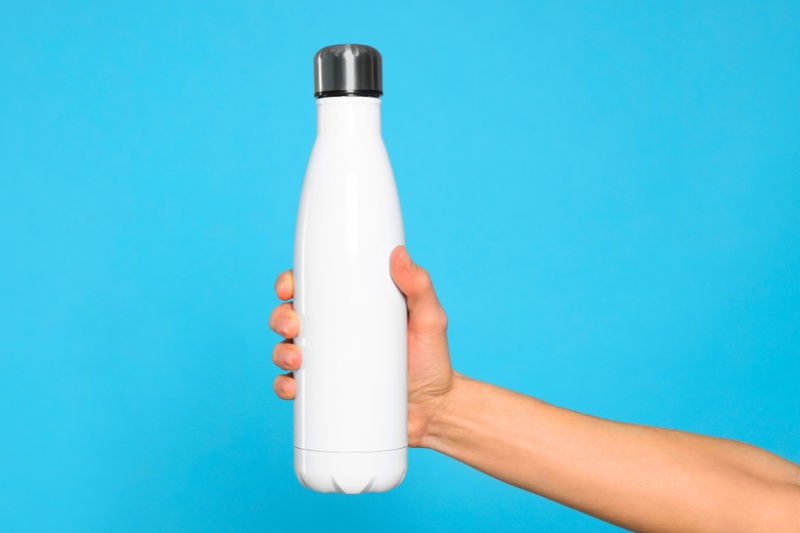

Hannah has a passion for cleaning. She worked her way around Australia by cleaning hostels in exchange for free accommodation and used her cleaning skills to bag a job as a chalet host for a luxury ski company in France.
